The experts reveal the worst trees to plant near a pool – and explain why
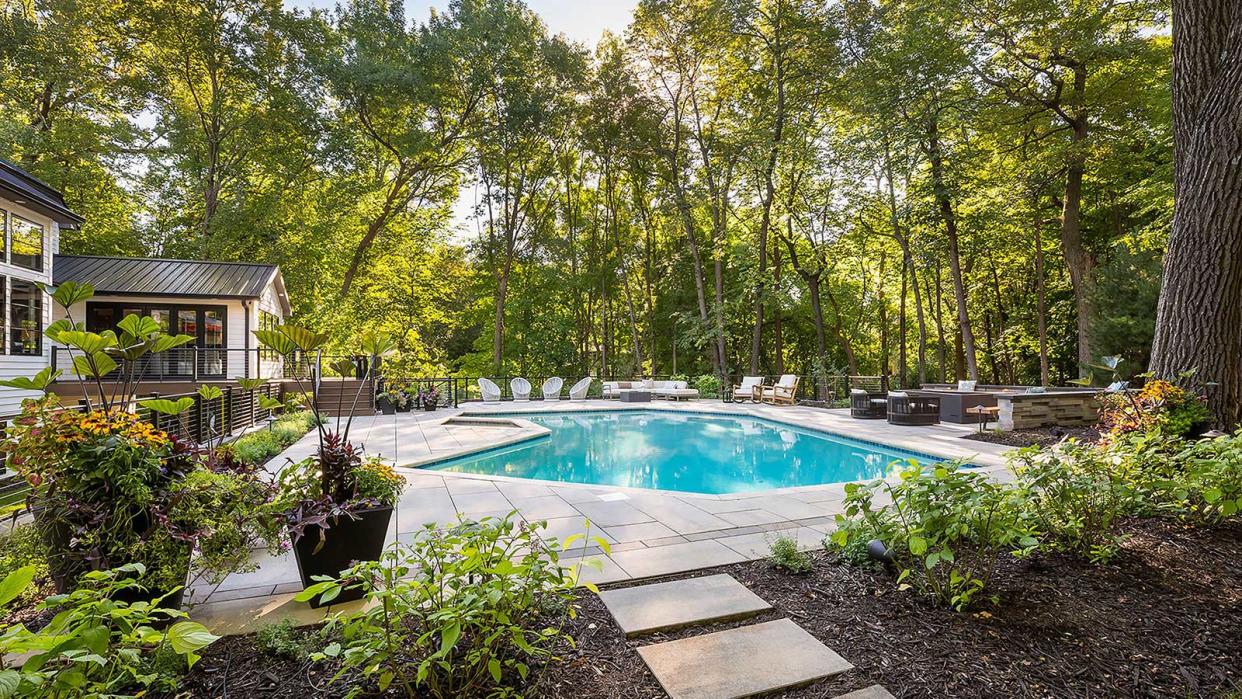
Trees can offer so much to a backyard poolside, from dappled shade to increased privacy and shelter. Their beautiful aesthetic and the soothing rustle of their leaves can also create a more relaxing and naturalistic backdrop for swimming or sunbathing. However, certain varieties can be problematic.
Some trees, for instance, demand lots of maintenance to prevent them from getting out of hand. Others are renowned for making a mess, which means you’ll forever be fishing out debris from your backyard pool or sweeping your poolside paving. Some can even pose safety risks, especially if you have little ones running around.
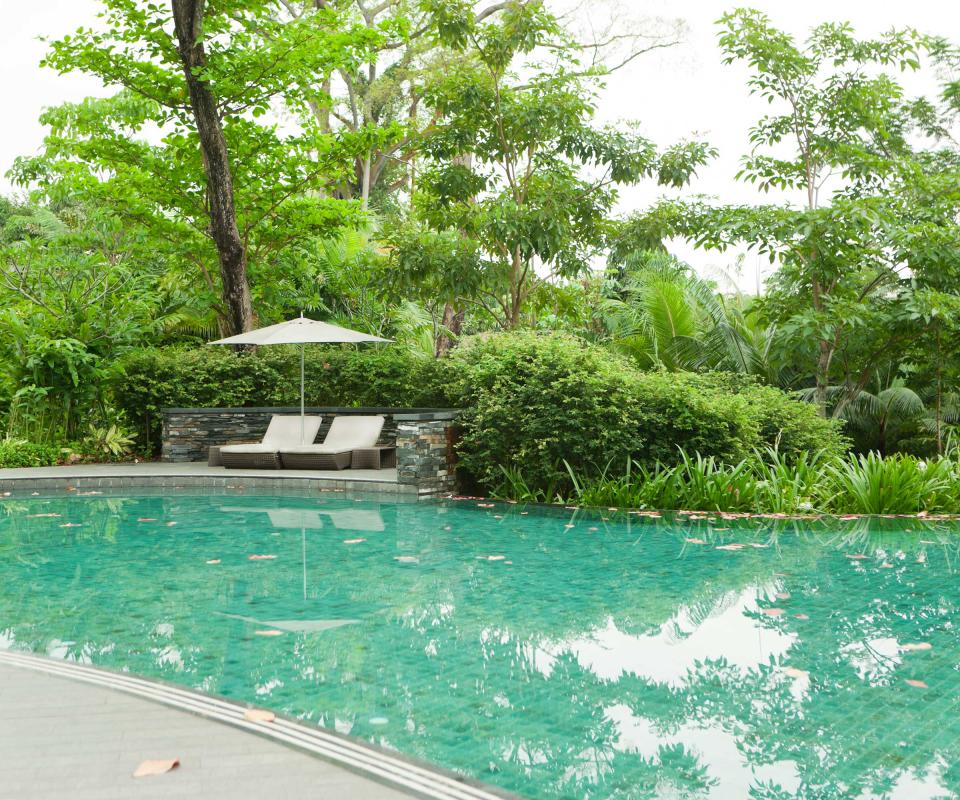
5 types of trees to avoid planting next to your pool
If you’re on the lookout for a tree to add to your pool landscaping plans, these are the types to avoid.
1. Trees that make a lot of mess
Pool maintenance is key for sparkling water and safe swimming. However, some trees can make your maintenance routine extra demanding.
Leaf drop is one factor to consider. 'Coniferous trees, like pines, firs, and spruces, can be especially tedious to clean up after in your pool area,' says Joseph Demkovich Sr. of Monster Tree Service. 'Their thin needles can slip through the netting of your skimmer and can be a hazard for those walking around the pool area barefoot,' he adds.
Pine trees also release a sticky sap, which can make cleaning a real chore, adds Bryan Clayton, a landscaping expert.
Carefully consider any berry-producing trees, too. Not only can these stain pool patios and clog pool filters, but they can also attract birds. 'This means more bird droppings in and around your pool, increasing your maintenance tasks,' says Bryan.
Bryan also warns against planting cottonwoods, as they shed a lot of cotton-like seeds.

2. High-maintenance trees
Some fast-growing trees require a lot of maintenance in terms of pruning to keep their size in check.
An example is the Leyland cypress, which is often used as a hedging plant, says Ned Cromack, an experienced arborist. 'They need pruning at least once a year, but ideally twice. Unless you stay on top of them, they get way too big.' And, as it's likely you'll need a professional to take care of the maintenance for you, the costs can quickly add up.
'What's more, as they get bigger, they lose their lower growth and the internal growth can get super messy,' Ned says.
Poplars and willows are other examples, he continues. 'They're not really suitable for planting close to a pool or house at all.'
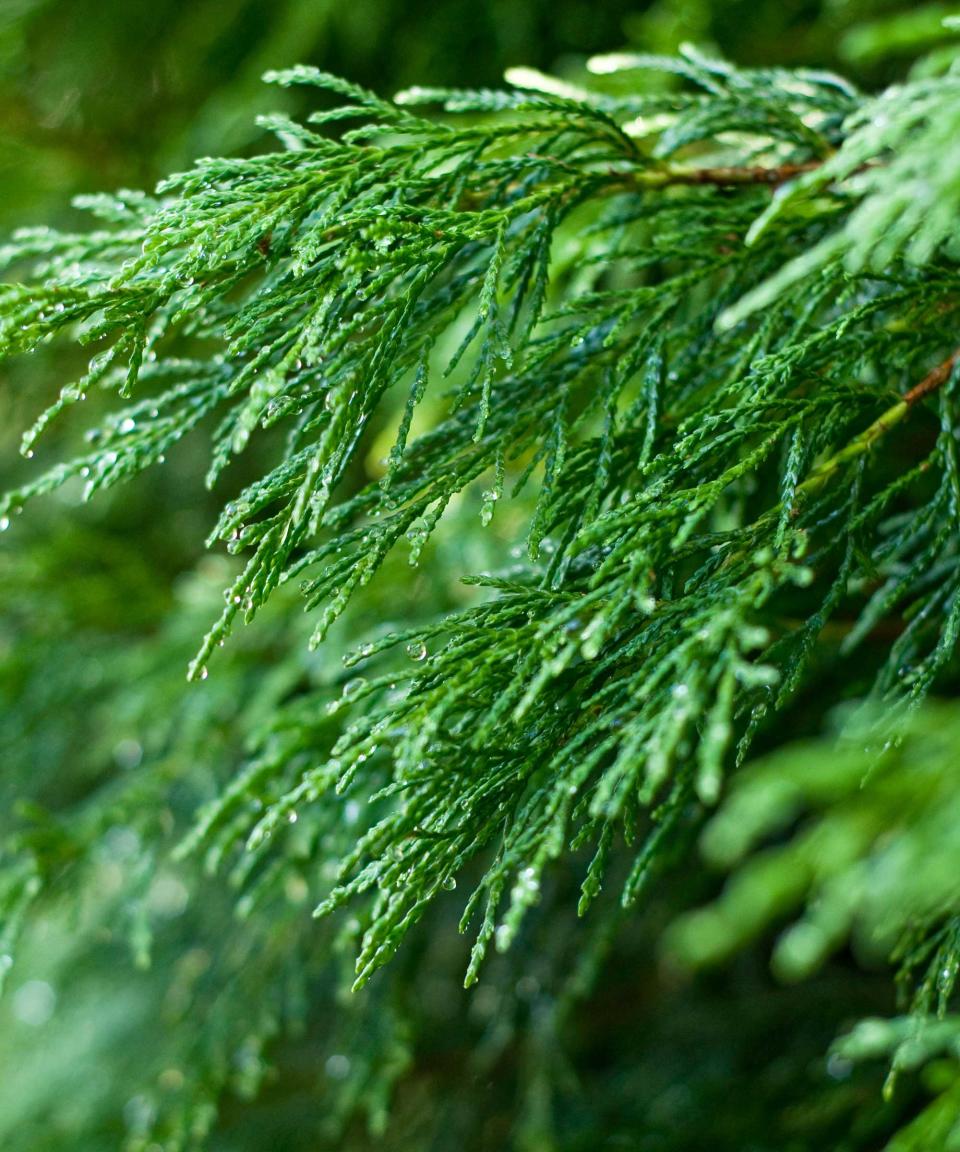
3. Trees that could be a safety risk
Some trees can impact pool safety, for several reasons.
Sweet gums, for instance, drop spiky seed balls, as Bryan points out. These can be painful if stepped on barefoot. Some trees also have spiky trunks (such as acacias), or leaves (think yucca trees, or holly). Again, these are best planted away from areas where people will be relaxing in swimwear.
Then there are toxic trees – including ones with poisonous berries, such as yew. Avoiding these will make the area more family-friendly.
Finally, be aware that some trees are more prone to drop their branches than others, so it's best to keep these away from a pool area (and could be avoided in a backyard altogether). These include tulip trees and poplars, highlights Ned.
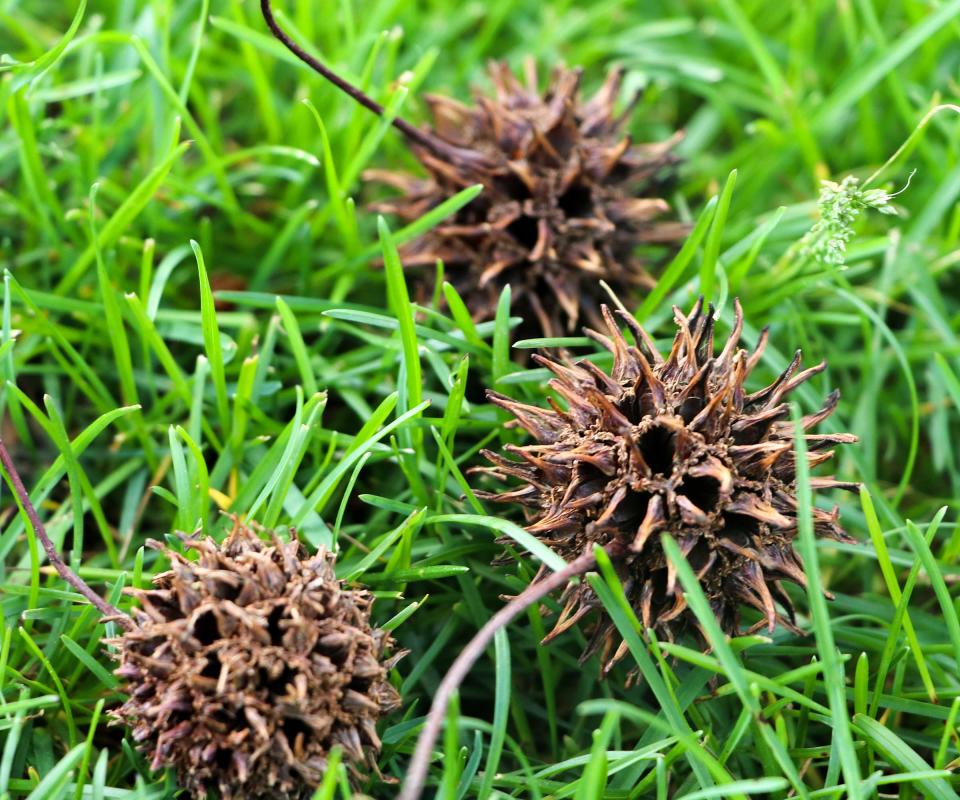
4. Trees with invasive roots
'Most large tree species, like maples, oaks, and sycamores, should not be planted close to the pool,' warns Joseph. This is because their roots can be very invasive and can penetrate concrete walls and foundations as well as pool plumbing, causing cracks and leaks, he explains.
Silver maples, American elms, and poplars can be similarly problematic. Willow trees are another example, adds Bryan, highlighting how their root system continuously seeks out water.
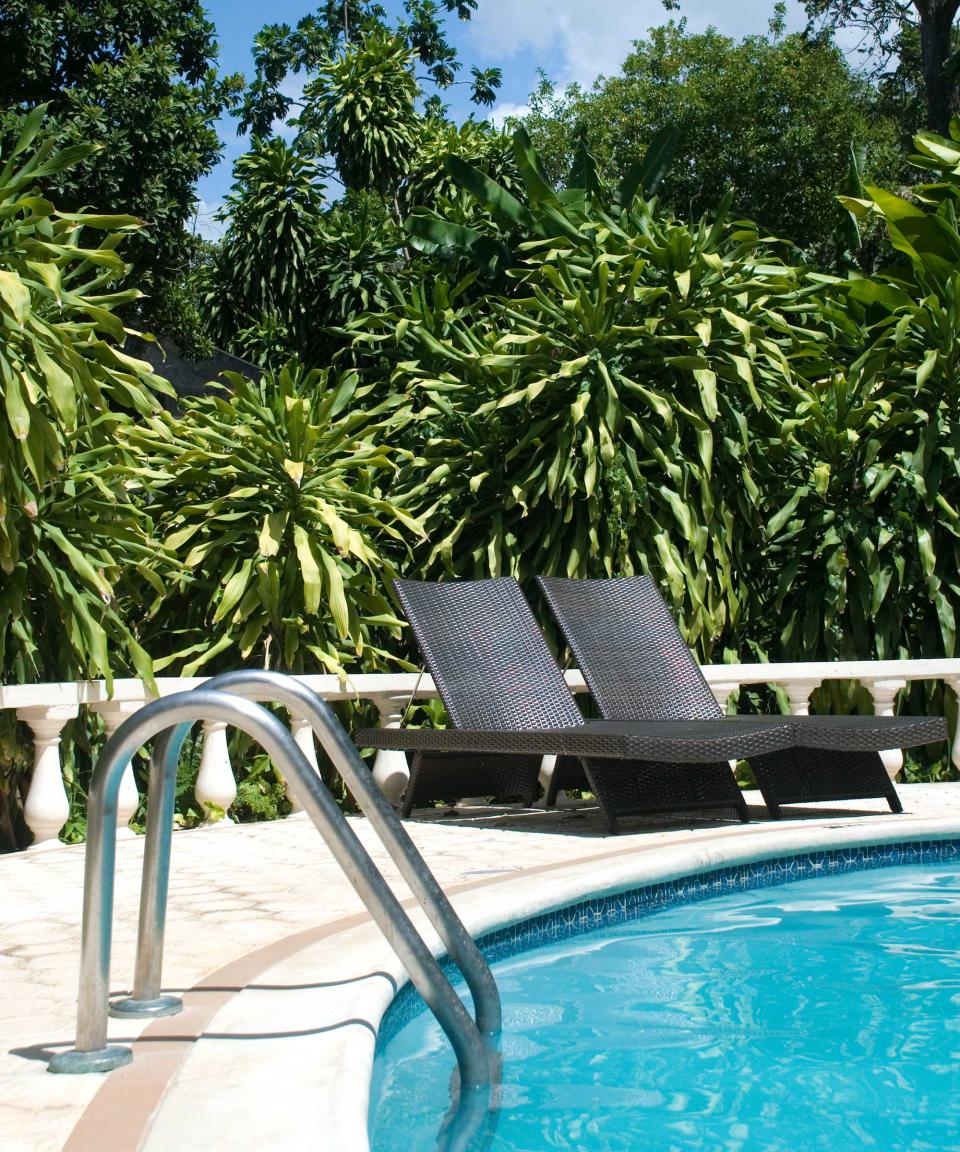
5. Trees that make too much shade
While a tree or two can bring a welcome spot of shade and pool privacy, some can cast your space into a deep, uninviting gloom, especially as they mature.
Eucalyptus trees are a good example. 'These trees are not only messy, shedding bark and leaves, but their rapid growth can change the ambiance of your pool area quicker than you might expect, blocking sun or views,' says Bryan.
Sometimes, it's better to opt for a patio shade solution instead of one of the best trees for shade as it will be more versatile.
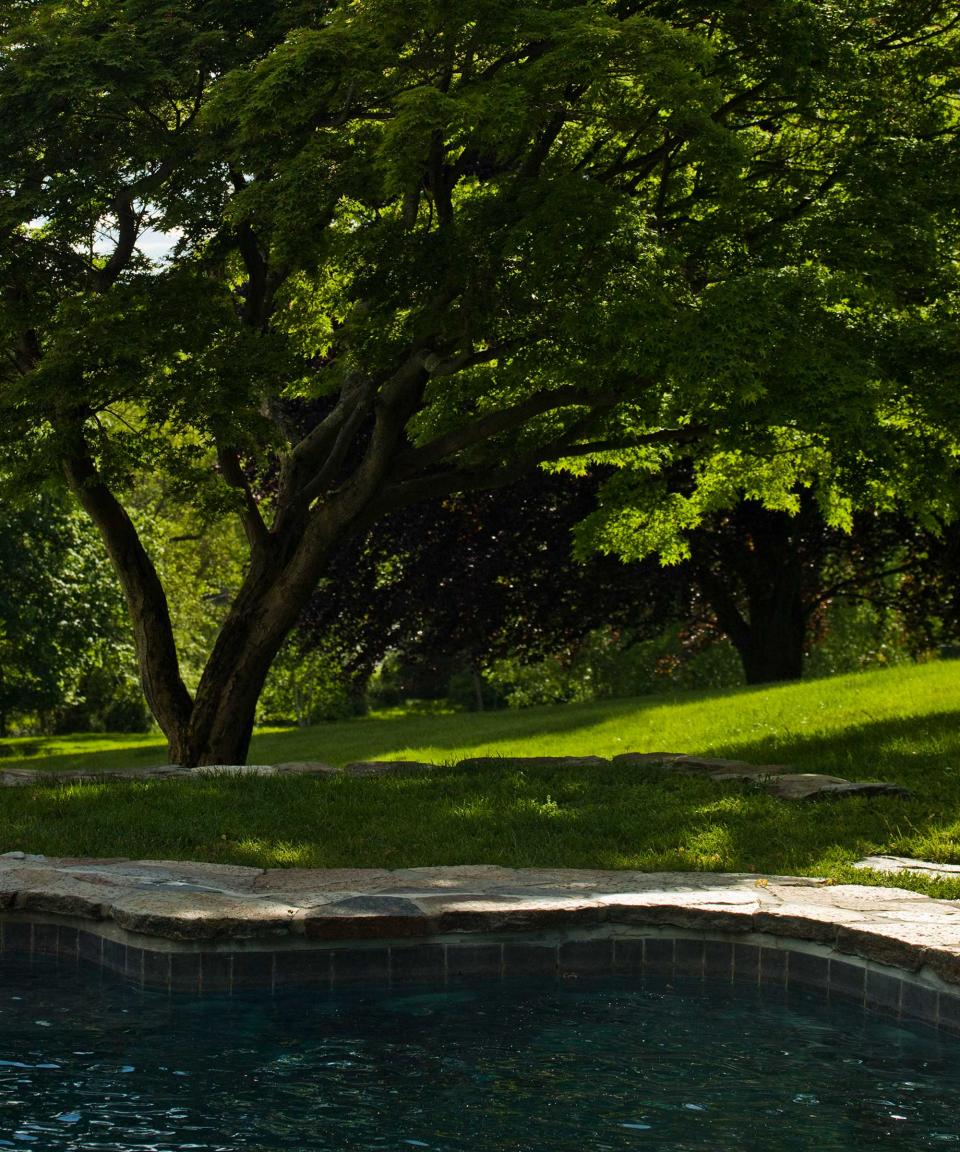
FAQs
What are the best trees to plant near a pool?
'If you want some vegetation around your pool, plant small tree species and shrubs, such as kousa dogwood, crepe myrtle, and saucer magnolia,' suggests Joseph Demkovich Sr. of Monster Tree Service.
'Another option is to use palms like the sago palm, a tree that grows slowly, has shallow roots, and produces limited debris,' says Alicia Toedter of pool-care supplies company Leslie's. Sago palms create a beachy vibe, and can even be potted so you can move them around your pool area, she adds. You can buy sago palms from Fast Growing Trees.
As well as (or instead of) trees, there are lots of other beautiful plants for a pool area.
How far away from a pool should you plant a tree?
The general guidance is to plant trees at least 5ft away from the edge of your pool, however, this does depend on the species and how aggressive the roots can be. Remember that a tree's roots are often as wide as the canopy, so check mature-size guidances before planting.
If you decide to plant a tree near your pool, proper maintenance is key. 'Provide routine pruning and implement a plant-health care program, including fertilization and insect and disease controls to reduce the risk of these issues,' Joseph recommends.
'Make sure you’re not watering your existing trees with pool water, either, as the chemicals from pool water can be unhealthy for the trees,' he adds.

